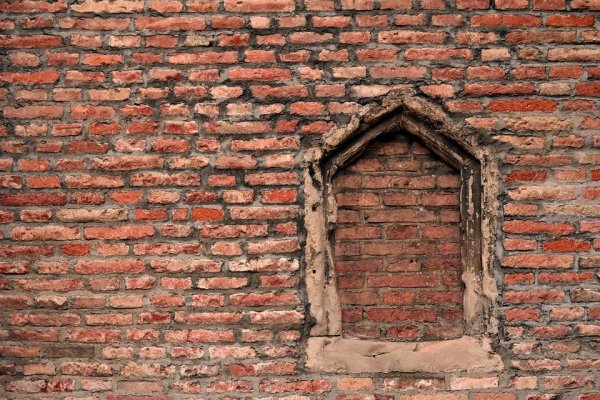The Broken Windows Theory

The broken windows theory states that imperfections in an environment make people feel there is no law and order. And, when there is no law and order, people can do as they please. When there are no rules, anything goes, including vandalism and destruction of property.
Say you’re smoking a cigarette on the sidewalk. You finish the cigarette. Where do you throw the stub? If you’re standing on a clean sidewalk with no signs of litter, it’s likely you’ll wait to throw the stub in the next trash can.
However, if the street is littered with cigarettes, you won’t make an effort to try to find a trash can. You’ll just throw it on the ground with all the others. At least this is what the studies say.

Broken car windows
Professor Phillip Zimbardo, who conducted one of social psychology’s most recognized experiments, the Stanford prison experiment, did another equally valuable — but lesser known — experiment. It consisted of leaving two abandoned cars on the street. The only difference was that one car was in a troubled neighborhood in a poor district, and the other on a street in a rich neighborhood.
Crime starts when a community shows signs of deterioration and no one seems to care.
His next step was to change the car. He broke the windows in the car in the rich neighborhood. What happened? Exactly what happened to the car left in the marginalized neighborhood. In a few hours, both cars were in the same situation.

The subway’s broken windows
The broken windows theory was the launching pad for an initiative to change one of New York’s most dangerous places: the subway. They fixed it up, cleaned it up, and got rid of the graffiti. Staff started to address even the smallest of thefts and made sure that everyone who used the subway paid for it. As a result, the subway became a safer place.
If we allow children to see violent attitudes as normal, they will grow into adults who are more accepting of violence.

The broken windows at home
As you’ve seen, if a window breaks and no one repairs it, we can guess what will happen next. If a neighborhood starts to show symptoms of deterioration, the next step is delinquency or vandalism.
Our environment influences us. Having a clean environment, without flaws, can contribute to better communities. Additionally, the broken windows theory can be applied to any environment. If you leave the plates in the sink for several days without washing them…
According to this theory, not penalizing even the small rule-breaking (illegal parking, speeding, running red lights) will lead to more rule-breaking and more serious crimes.
The broken windows theory says that small problems can lead to law breaking. Allowing a small theft can lead to greater theft, even corruption. Setting clear rules, and making any exceptions to the rule clear, can be one solution — as long as it does not come too late.
The broken windows theory states that imperfections in an environment make people feel there is no law and order. And, when there is no law and order, people can do as they please. When there are no rules, anything goes, including vandalism and destruction of property.
Say you’re smoking a cigarette on the sidewalk. You finish the cigarette. Where do you throw the stub? If you’re standing on a clean sidewalk with no signs of litter, it’s likely you’ll wait to throw the stub in the next trash can.
However, if the street is littered with cigarettes, you won’t make an effort to try to find a trash can. You’ll just throw it on the ground with all the others. At least this is what the studies say.

Broken car windows
Professor Phillip Zimbardo, who conducted one of social psychology’s most recognized experiments, the Stanford prison experiment, did another equally valuable — but lesser known — experiment. It consisted of leaving two abandoned cars on the street. The only difference was that one car was in a troubled neighborhood in a poor district, and the other on a street in a rich neighborhood.
Crime starts when a community shows signs of deterioration and no one seems to care.
His next step was to change the car. He broke the windows in the car in the rich neighborhood. What happened? Exactly what happened to the car left in the marginalized neighborhood. In a few hours, both cars were in the same situation.

The subway’s broken windows
The broken windows theory was the launching pad for an initiative to change one of New York’s most dangerous places: the subway. They fixed it up, cleaned it up, and got rid of the graffiti. Staff started to address even the smallest of thefts and made sure that everyone who used the subway paid for it. As a result, the subway became a safer place.
If we allow children to see violent attitudes as normal, they will grow into adults who are more accepting of violence.

The broken windows at home
As you’ve seen, if a window breaks and no one repairs it, we can guess what will happen next. If a neighborhood starts to show symptoms of deterioration, the next step is delinquency or vandalism.
Our environment influences us. Having a clean environment, without flaws, can contribute to better communities. Additionally, the broken windows theory can be applied to any environment. If you leave the plates in the sink for several days without washing them…
According to this theory, not penalizing even the small rule-breaking (illegal parking, speeding, running red lights) will lead to more rule-breaking and more serious crimes.
The broken windows theory says that small problems can lead to law breaking. Allowing a small theft can lead to greater theft, even corruption. Setting clear rules, and making any exceptions to the rule clear, can be one solution — as long as it does not come too late.
This text is provided for informational purposes only and does not replace consultation with a professional. If in doubt, consult your specialist.







